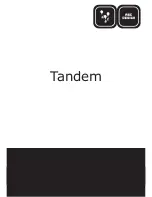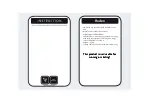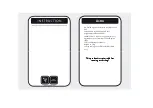
Copyright © 2010 Greenheck Fan Corporation
468753 Belimo IOM Rev. 5 February 2010
Instructions for Severe Environment (316SS):
These installation instructions assume the damper is already
mounted in a duct or sleeve with the damper shaft extending
beyond the duct or sleeve 6 inches (152mm).
1. Install the stand off bracket.
Dampers with a jackshaft
1a. Mount the stand off bracket (item 4) onto the jackshaft
bracket with (4) 1/4-20 x 1/2 in. stainless steel bolts (item
5)and 1/4-20 hex nuts (item 6). Orient the anchor bracket
perpendicular to the damper on the duct or sleeve so
that the bracket shaft hole is centered on the jackshaft.
Dampers without a jackshaft (Shaft Extension)
1b. Mount the stand off bracket (item 3) and extension pin,
as detailed in extension pin kit instructions, spanning
across the damper frame flanges. Orient the anchor
bracket perpendicular to the damper on the duct or
sleeve so that the bracket shaft hole is centered on the
shaft extension. Fasten to the damper frame with (4)
1/4-20 x 1/2 in. stainless steel bolts (item 5) and 1/4-20
hex nuts (item 6). Be sure not to run the screws into the
damper linkage, which is between the flanges.
2. If the fail rotation of the damper is counter clockwise, this is a
Left Hand installation and the universal clamp should be on
the side labeled CCW on the actuator (usually shipped in this
orientation). If the fail rotation of the damper is clockwise, this
is a Right Hand installation and the universal clamp should be
on the side labeled CW on the actuator.
To change the universal clamp from one side to the other
side, remove the retaining clamp and then the universal clamp
from the actuator. Replace the universal clamp on the correct
side of the actuator making sure that the corresponding tab is
pointing to 0° and fits onto the actuator. Slip the clamp on and
then lock in place using the retaining clamp.
Note:
All fail rotations refer to the damper shaft rotation
needed to achieve the desire blade fail position. If fail position
is closed, make sure damper blades are fully close and ensure
blade seals are compressed prior to tightening the actuator
clamp to the damper extension pin or jackshaft. Inspect the
damper blades and the damper shaft to determine the proper
damper shaft rotation for the desired blade fail position.
3. Slide the actuator and the mounting bracket (item 2)
onto the damper shaft. Mount the mounting bracket
(item 2) to the stand off bracket using (4)
1
/
4
in.-20 x
1
/
2
in. bolts (item 5), and (4)
1
/
4
in. - 20 Spinlock nuts (item
6). Use the outer four holes of the mounting bracket for
jackshafted models and the inner four holes for directly
driven models.
Note:
The mounting bracket (item 2) may be attached
in three positions: parallel with the duct, perpendicular
up from the duct, or perpendicular down from the duct.
Choose a position that offers the most clearance for the
application.
4. Verify that the damper is in its fail position. Tighten the
universal clamp to the damper shaft.
5. The wiring illustration is located on the face of the
actuator. Wiring should be per an approved project or
job wiring diagram and must comply with all applicable
electrical codes.
6. Apply power to the actuator. The damper blades should
fully open or close. No adjustments are required.
Orientation of Stand Off
Bracket for a directly driven
damper
Orientation of Stand Off
Bracket for a jackshaft
driven damper






















